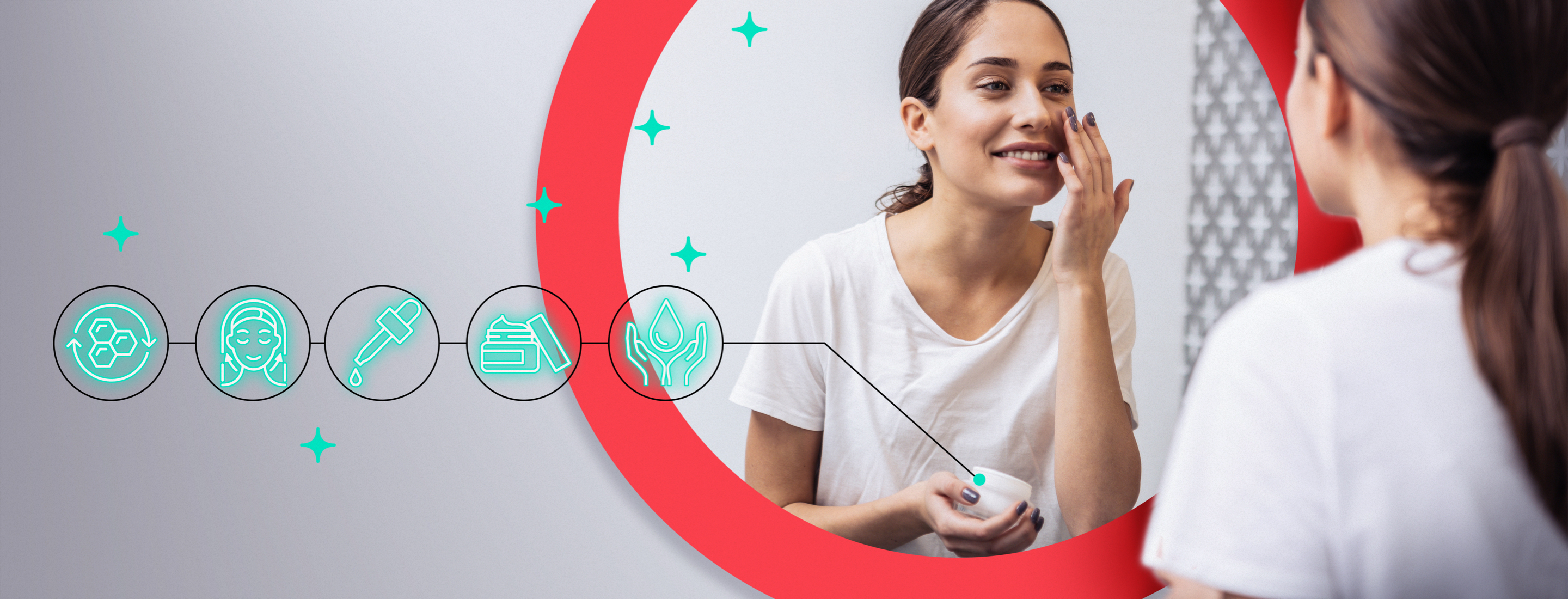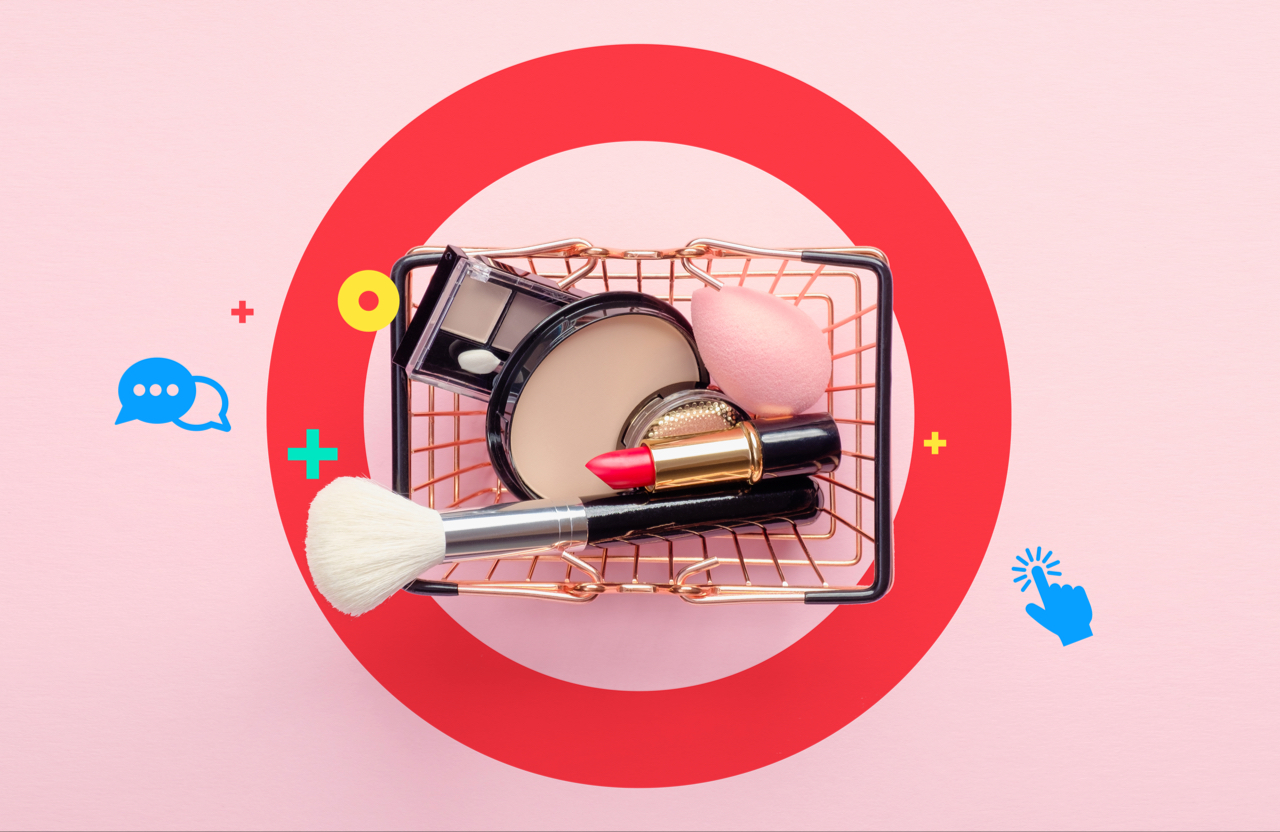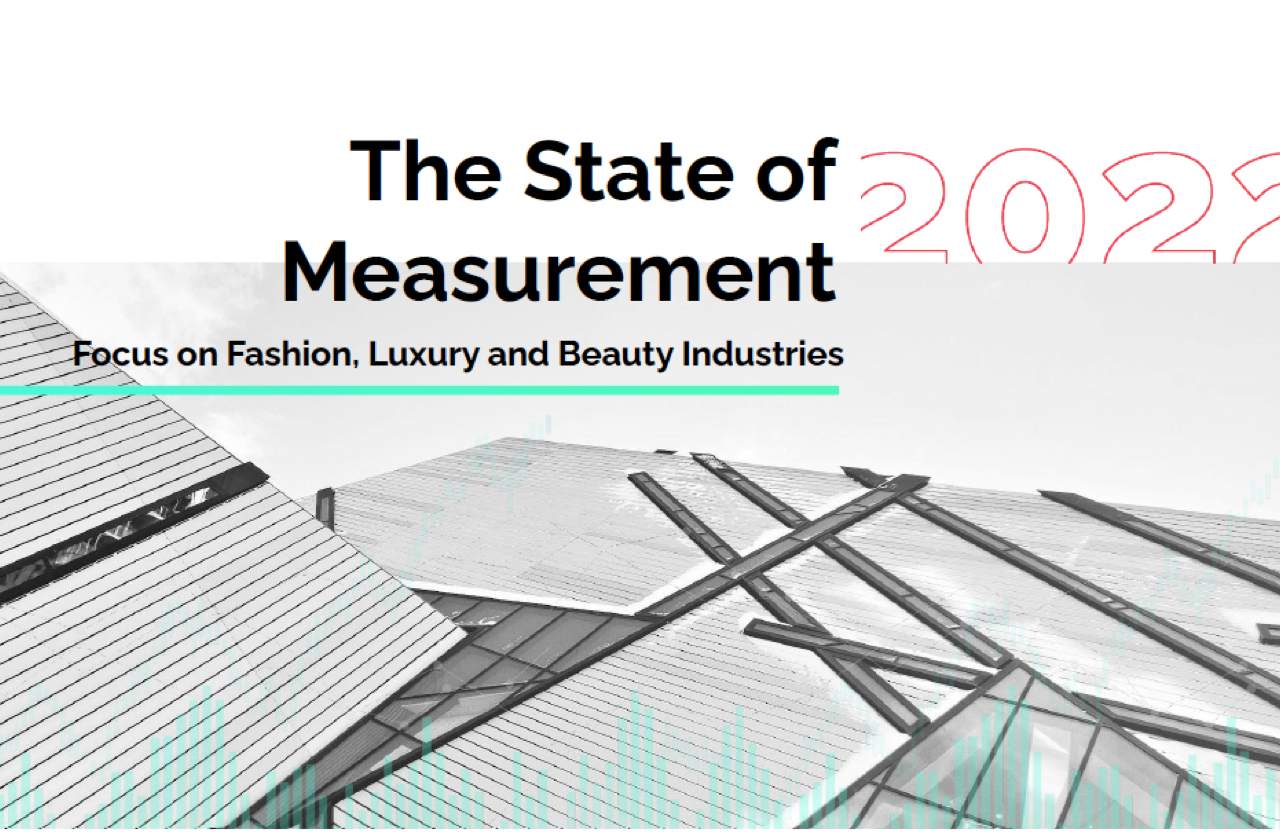What issue can we solve for you?
Type in your prompt above or try one of these suggestions
Suggested Prompt



Insights
Rethinking Your Skincare Routine? Top 5 Trends Shaping the Beauty Industry in 2024
Against the backdrop of global inflation, economic volatility, emerging technology and rapidly shifting consumer behavior, the industry faced challenges and uncertainties no brand was prepared for.
In the past year, brands made strategic pivots and unforeseen cuts to cope with significant fluctuations in demand, channel shifts and supply chain disruption.
From new digital consumer channels like TikTok Shop to innovative artificial intelligence technology like generative AI, this year has forced brands to accelerate digital business transformation more than ever before.
"In the beauty and personal care industries, there’s so much competition and there’s always something new. You’re only as good as your last innovation.”
Elizabeth Papasakelariou , Consumer Products Lead, North America
Publicis Sapient surveyed global consumers about topics like brand loyalty, sustainability and generative AI to see what customers truly care about when it comes to beauty industry trends.
Our consumer products industry expert weighed in to share predictions for the beauty and personal care industry, based on beauty consumer insights, beauty market trends and industry forecasts.
So, what will be next in beauty for 2024? The overarching theme is demand volatility.
Here’s how this theme will play out, and strategies to help brands respond.

1. From blush to bust: the fluctuating costs of products and materials
Prices for beauty and personal care products last year were volatile due to the increasing costs of raw materials. These fluctuating costs, particularly for natural ingredients, are impacting product pricing and consumer affordability, leading to fluctuating consumer demand.
Ingredients like lavender, glycerin or citric acid have rapidly increased in cost, and brands have had to grapple with pivoting to new product formulas or increasing their own prices.
Consumers dealing with the cost-of-living crisis have also had to make cuts in their own spending, and it’s difficult to predict exactly how broader economic inflation will play out for beauty and personal care brands in the coming year.
Focus on innovation and rebranding: Advancements in artificial intelligence will allow brands to respond to fluctuations in raw materials costs through automating reformulation, creating prototypes and conducting virtual testing.

2. Brand brawl: navigating the crowded canvas of the beauty market
The past year also brought an influx of direct-to-consumer (D2C) and digitally-native beauty and personal care brands that pushed product innovation boundaries, especially within the clean beauty and beauty science spaces. From biomimetic hair science vitamins and shampoos to mood-elevating fragrances and foundations that adapt to customers’ skin tones, it’s becoming harder and harder to stand out in a saturated market. But as more and more small brands emerge, demand for these newcomers is unpredictable, which simultaneously affects legacy brands.
“While there are so many small beauty brands today, there's a bit of a ‘one-hit wonder’ phenomenon, where disruptor brands will go viral with a certain product, but they’ll struggle to sustain long-term success with anything outside of that.”
Elizabeth Papasakelariou , Consumer Products Lead, North America
Highlight heritage and legacy: Emphasize your brand’s established reputation and unique selling points to stand out from fleeting trends. There is a reason why certain beauty and personal care brands have been around for 20, 50 or close to 100 years, and they need to remember that they have a license to stick around.

3. Beauty buffet: catering to the evolving appetites of consumers
Not only is the saturated beauty and personal care market a challenge for legacy brands, but it’s also overwhelming for consumers when there are so many new products to choose from online. The impact of social media and the internet on beauty trends? Decreased loyalty.
More than half of global consumers report having little or no brand loyalty overall, according to a Publicis Sapient global survey.
Not only are retail shelves stocked with an influx of new and unfamiliar products and brand names, but social media channels like TikTok also highlight product after product through paid and organic content. Unsurprisingly, consumers are easily swayed by the latest trends and celebrity endorsements—from clean beauty to wellness, especially for Gen Z.
Approximately 35 percent of Gen Z uses social media to discover and evaluate new brands and products.This constant search for novelty makes it difficult for brands to predict and meet evolving consumer demands. This constant search for novelty makes it difficult for brands to predict and meet evolving consumer demands.
Personalization and data analysis: Harness consumer data and search trends to personalize product recommendations and develop formulas that address emerging interests, like snail mucin, rosemary oil or hyaluronic acid.

4. The green gap: bridging the divide between eco-friendly and budget-friendly
Compared to other consumer-facing industries, demand for sustainable beauty trends is almost unmatched and will continue to grow in 2024.
However, sustainable products come with higher price tags, creating a dilemma for brands trying to balance sustainability goals with affordability and mass appeal. How can brands predict demand for sustainable products when there’s not one standard for what sustainability means?
For example, 66 percent of consumers don’t trust sustainability labeling, especially sustainability certifications, but half of consumers do trust companies that reveal their sourcing and production methods. It’s not easy to clearly communicate the origins of different raw materials or ethical labor practices through packaging or other brand content—if brands even have this information to begin with.
“How do you visually show or explain an ethical supply chain to the everyday consumer, outside of a sustainability label? It’s going to be interesting to see how brands can make blockchain practices and transparency accessible and consumer-friendly.”
Elizabeth Papasakelariou , Consumer Products Lead, North America
Transparency and traceability: Utilize tools like blockchain to demonstrate ethical sourcing, sustainable practices and product authenticity, building trust with eco-conscious consumers. Show, don’t tell via refillable or glass packaging, instead of sustainability certifications.

5. From potion to precision: making technology a beauty power play
Demand volatility rings true across the future of beauty industry technology too as tech trends come and go. Certain digital experiences, such as beauty AR-product try-ons, AI-generated product recommendations and automated shopping assistants, have become almost table stakes in the beauty and personal care industry—but in 2024, brands have an opportunity to leverage these technologies, including generative AI, across in-person and digital channels.
For example, consumers can get a personalized shampoo formula based on photos of their scalp, lifestyle information and scent preferences online, but the consumer data and personalization don’t translate to in-store or online retail experiences. While brands use generative AI-powered chatbots to learn more about consumer haircare, consumers still enter the store and are met with a mostly traditional beauty retail experience that hasn’t changed for decades.
Bridging the online-offline gap: Integrate online and offline experiences by offering seamless omnichannel customer support and personalized recommendations in physical stores.
The future of beauty technology and the personal care industry
The top trends shaping the beauty and personal care industry are both novel and predictable at the same time.
Sustainability has been on the agenda for over a decade, but the newfound demand for clean beauty has exploded. Increasing costs and supply chain disruptions have drastically affected profits since COVID-19, but the ability for generative AI to successfully reformulate products based on a variety of factors is brand new.
“What’s changed in 2024 is that brands are able to use data better. Technology and consumer data are allowing brands to actually catch up to these ideas that they’ve had for years.”
Elizabeth Papasakelariou , Consumer Products Lead, North America
Beauty industry report: Read Publicis Sapient’s outlook on 2024 digital business transformation trends to learn more about how brands across the entire consumer products landscape should shift their strategy.
Related Reading
-
![]()
Insights
The Hitchhiker’s Guide To AI for Consumer Packaged Goods Firms (CPGs)
Can consumer packaged goods firms (CPGs) keep up with conversational AI changing the game?
-
![]()
Insights
Inside The Mind of The Next-Gen Beauty Shopper
Publicis Sapient research explores how Millennial and Gen Z shoppers prefer to buy online, with new opportunities for CPG brands to remain relevant through digital and social commerce experiences.
-
![]()
Insights
The State of Measurement in Fashion, Luxury & Beauty 2022
Publicis Sapient & Launchmetrics partnered to bring ‘The State of Measurement for Fashion, Luxury and Beauty 2022’ to deep dive into marketing impact and attribution in an omnichannel world







